
"Twinkle, Twinkle, Little Bat" is a poem recited by the Mad Hatter in chapter seven of Lewis Carroll's 1865 novel Alice's Adventures in Wonderland . It is a parody of "Twinkle Twinkle Little Star". [1]

"Twinkle, Twinkle, Little Bat" is a poem recited by the Mad Hatter in chapter seven of Lewis Carroll's 1865 novel Alice's Adventures in Wonderland . It is a parody of "Twinkle Twinkle Little Star". [1]
Twinkle, twinkle, little bat!
How I wonder what you're at!
Up above the world you fly,
Like a teatray in the sky. [2]
The Hatter is interrupted in his recitation by the Dormouse. "The Bat" was the nickname of Professor Bartholomew Price, one of the Dons at Oxford, a former teacher of Carroll's and well known to Alice Liddell's family. [1]
"Twinkle, Twinkle, Little Star" is an English lullaby. The lyrics are from an early-19th-century English poem written by Jane Taylor, "The Star". The poem, which is in couplet form, was first published in 1806 in Rhymes for the Nursery, a collection of poems by Taylor and her sister Ann. It is now sung to the tune of the French melody "Ah! vous dirai-je, maman", which was first published in 1761 and later arranged by several composers, including Mozart with Twelve Variations on "Ah vous dirai-je, Maman". The English lyrics have five stanzas, although only the first is widely known. The song is in the public domain.

Alice's Adventures in Wonderland is an 1865 English children's novel by Lewis Carroll, a mathematics don at Oxford University. It details the story of a young girl named Alice who falls through a rabbit hole into a fantasy world of anthropomorphic creatures. It is seen as an example of the literary nonsense genre. The artist John Tenniel provided 42 wood-engraved illustrations for the book.

The Hatter is a fictional character in Lewis Carroll's 1865 book Alice's Adventures in Wonderland and its 1871 sequel Through the Looking-Glass. He is very often referred to as the Mad Hatter, though this term was never used by Carroll. The phrase "mad as a hatter" pre-dates Carroll's works. The Hatter and the March Hare are referred to as "both mad" by the Cheshire Cat, in Alice's Adventures in Wonderland in the sixth chapter titled "Pig and Pepper".
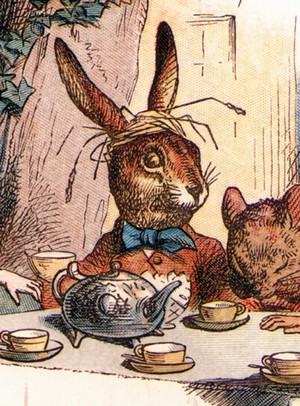
The March Hare is a character most famous for appearing in the tea party scene in Lewis Carroll's 1865 book Alice's Adventures in Wonderland.

Alice in Wonderland is a 1951 American animated musical fantasy comedy film produced by Walt Disney Productions and released by RKO Radio Pictures. It is based on Lewis Carroll's 1865 novel Alice's Adventures in Wonderland and its 1871 sequel Through the Looking-Glass. The production was supervised by Ben Sharpsteen, and was directed by Clyde Geronimi, Wilfred Jackson, and Hamilton Luske. With the voices of Kathryn Beaumont, Ed Wynn, Richard Haydn, Sterling Holloway, Jerry Colonna, Verna Felton, J. Pat O'Malley, Bill Thompson, and Heather Angel, the film follows a young girl Alice who falls down a rabbit hole to enter a nonsensical world Wonderland that is ruled by the Queen of Hearts, while encountering strange creatures, including the Mad Hatter and the Cheshire Cat.
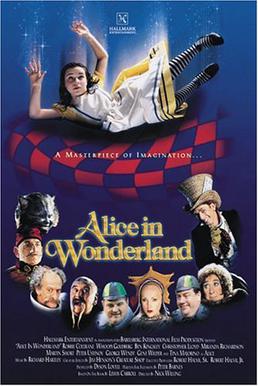
Alice in Wonderland is a 1999 made-for-television film adaptation of Lewis Carroll's books Alice's Adventures in Wonderland (1865) and Through the Looking-Glass (1871). It was first broadcast on NBC and then shown on British television on Channel 4.

Lewis Carroll's books Alice's Adventures in Wonderland (1865) and Through the Looking-Glass (1871) have been highly popular in their original forms, and have served as the basis for many subsequent works since they were published. They have been adapted directly into other media, their characters and situations have been appropriated into other works, and these elements have been referenced innumerable times as familiar elements of shared culture. Simple references to the two books are too numerous to list; this list of works based on Alice in Wonderland focuses on works based specifically and substantially on Carroll's two books about the character of Alice.
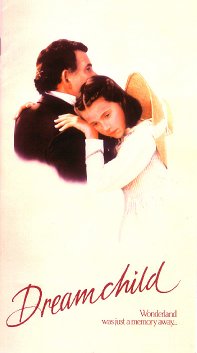
Dreamchild is a 1985 British drama film written by Dennis Potter, directed by Gavin Millar, and produced by Rick McCallum and Kenith Trodd. The film, starring Coral Browne, Ian Holm, Peter Gallagher, Nicola Cowper and Amelia Shankley, is a fictionalised account of Alice Liddell, the child who inspired Lewis Carroll's 1865 novel Alice's Adventures in Wonderland.

An unbirthday is an event celebrated on all days of the year which are not a person's birthday. It is a neologism which first appeared in Lewis Carroll's 1871 novel Through the Looking-Glass. The concept gave rise to "The Unbirthday Song" in the 1951 animated feature film Alice in Wonderland.
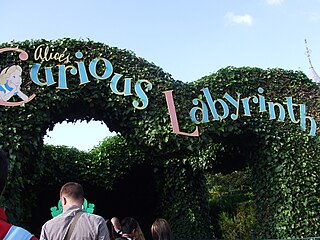
Alice's Curious Labyrinth is a hedge maze attraction at the Disneyland Park within Disneyland Paris. It opened in 1992 with the Park, and belongs to the British part of Fantasyland. A similar maze attraction, based on both the 1951 and 2010 Disney film adaptations of Lewis Carroll's Alice in Wonderland, exists at Shanghai Disneyland Park.

Alice's Adventures in Wonderland is a 1972 British musical film directed by Australian filmmaker William Sterling, based on Lewis Carroll's 1865 novel of the same name and its 1871 sequel, Through the Looking-Glass. It had a distinguished ensemble cast and a musical score composed by John Barry with lyrics written by Don Black. In addition, make-up artist Stuart Freeborn created film visuals based on the original drawings by John Tenniel from the first edition of the novel.

The King of Hearts is a character from the 1865 book Alice's Adventures in Wonderland by Lewis Carroll. He is the husband of the Queen of Hearts.

The Dormouse is a character in "A Mad Tea-Party", Chapter VII from the 1865 novel Alice's Adventures in Wonderland by Lewis Carroll.
The New Alice in Wonderland is a 1966 American animated television special written by Bill Dana and produced by Hanna-Barbera. It was broadcast on the ABC network on March 30, 1966, in an hour slot. The songs were written by composer Charles Strouse and lyricist Lee Adams, who were most famous for Bye Bye Birdie. The songs were orchestrated by Marty Paich, who also provided musical direction; plus devised and arranged that part of the underscoring that was drawn from the musical numbers. The rest of the underscoring was drawn from the vast library of cues that Hanna-Barbera's in-house composer Hoyt Curtin had written for various animated series.

Alice in Wonderland is a 1915 American silent film adaptation of Lewis Carroll's classic 1865 novel, Alice's Adventures in Wonderland, directed and written by W. W. Young and starring Viola Savoy as Alice.
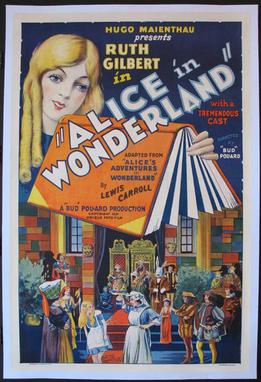
Alice in Wonderland (1931) is an independently made black-and-white Pre-Code American film based on Lewis Carroll's 1865 novel Alice's Adventures in Wonderland, directed by Bud Pollard, produced by Hugo Maienthau, and filmed at Metropolitan Studios in Fort Lee, New Jersey.
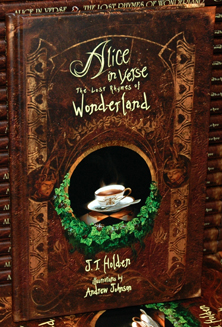
Alice in Verse: The Lost Rhymes of Wonderland (2010) is a reimagining of Lewis Carroll's 1865 novel Alice's Adventures in Wonderland written by British-American author J.T. Holden. It tells the story of Alice's Adventures in Wonderland in 19 rhyming poems, each written in the same style as Lewis Carroll's original verse. The book includes 36 illustrations by American artist Andrew Johnson.

The Puppy is a fictional character in Lewis Carroll's 1865 novel Alice's Adventures in Wonderland. He appears in the chapter "The Rabbit Sends a Little Bill".
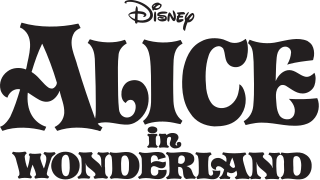
Alice in Wonderland, or simply Alice, is a Disney media franchise, commencing in 1951 with the theatrical release of the animated film Alice in Wonderland. The film is an adaptation of the books by Lewis Carroll, the 1865 novel Alice's Adventures in Wonderland and its 1871 sequel Through the Looking-Glass, which featured his character Alice. A live-action film directed by Tim Burton was released in 2010.
Alice in Wonderland and Through the Looking-Glass is a 2001 stage adaptation of Lewis Carroll's 1865 novel Alice's Adventures in Wonderland, and the 1871 novel Through the Looking-Glass. It was written by Adrian Mitchell. A 2 hour adaptation of both of Carroll's novels, it holds the distinction for currently being the most comprehensive stage adaptation of the books yet made, with the endings of both novels intact and only minor changes made for theatrical staging reasons.